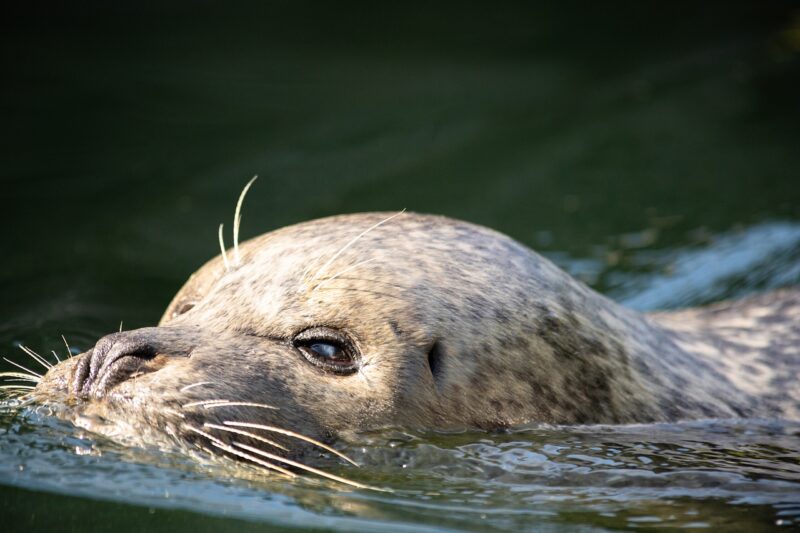
Zoos and aquariums play a crucial role in conservation, education, and research, especially when it comes to marine life. With many underwater environments at risk due to pollution, climate change, and habitat destruction, the design of aquatic habitats within zoos has become increasingly sophisticated. This article delves into the science and artistry behind creating these habitats to support marine species, from the complex interactions between organisms to the technological innovations employed in their design.
1. Understanding the Importance of Aquatic Habitats
Aquatic habitats mimic the natural environments of marine species, providing animals with a space that feels safe and realistic. The importance of these habitats extends beyond mere aesthetics; they serve essential functions for the well-being of the animals, including:
- Psychological Well-being: Properly designed aquatic habitats allow species to exhibit natural behaviors, reducing stress and promoting mental health.
- Social Structure: Many marine species have complex social structures. Aquatic habitats facilitate social interactions, mimicking schools of fish or pods of marine mammals.
- Conservation Efforts: Zoos contribute to the conservation of endangered species by providing controlled environments where breeding, rehabilitation, and research can take place.
These habitats require thoughtful planning by zoologists, marine biologists, and engineers to create environments where marine species can flourish.
2. Key Elements of Aquatic Habitat Design
Creating a suitable aquatic habitat is an intricate process. Here are key elements that zoo designers focus on:
2.1. Water Quality and Filtration
A crucial element of any aquatic habitat is the maintenance of water quality. Zoos use advanced filtration systems to ensure clean, clear water, which is vital for the health of marine life. Monitoring systems are set up to regulate:
- Temperature
- pH levels
- Dissolved oxygen
- Salinity layers for saltwater species
Proper water quality management mimics the conditions of the animals’ natural habitats and promotes healthy behavior and reproduction.
2.2. Habitat Structure and Complexity
Aquatic environments are rarely flat; instead, they include rocks, coral, and vegetation to create layers and complexity. This structure is essential for:
- Providing hiding places from predators.
- Creating feeding zones with ample resources.
- Supporting biodiversity within the habitat.
Designers often explore various configurations to achieve an environment that feels authentic to the species being housed.
2.3. Natural Mimicry and Landscape Design
Incorporating features from natural habitats not only provides a realistic setting but also enhances the aesthetic quality of the exhibits. Using natural materials and patterns, designers create:
- Rock formations that replicate a reef structure.
- Submerged logs and plant life that mirror coastal ecosystems.
- Dynamic currents for fish species that naturally travel with the tide.
This effort promotes natural behaviors and provides educational experiences for visitors to learn about marine ecosystems.
3. Categories of Aquatic Habitats
Aquatic habitats in zoos can be broadly categorized based on their designs, aimed at specific marine life:
3.1. Coral Reef Exhibits
Coral reefs are among the most diverse ecosystems. When designing displays for species like clownfish and angelfish, zoos create colorful coral replicas and simulate currents to allow for natural interactions and breeding.
3.2. Open Ocean Environments
These large tanks house pelagic species, such as tuna and sharks. Designers ensure the tanks are large enough to accommodate the swimming habits of these fast-moving creatures, utilizing deep water features and minimal barriers for unobstructed views.
3.3. Brackish Water Habitats
Brackish habitats are a blend of fresh and saltwater and are vital for species like mangrove fish. Consequently, zoo designers focus on creating shallow waters, mudflats, and rooted vegetation to simulate mangroves, crucial for the ecological balance of these unique environments.
4. Technological Innovations in Habitat Design
Advancements in technology have revolutionized the design and maintenance of aquatic habitats:
4.1. Automation and Monitoring Systems
Today’s zoos use automated systems to monitor and manage water quality in real-time. Sensors track environmental changes, sending alerts if conditions fluctuate beyond acceptable ranges. This innovation allows for immediate action to be taken, ensuring the health of the species.
4.2. Interactive Visitor Experiences
Modern zoos aim to bridge the gap between conservation locations and public engagement. Many aquatic exhibits incorporate touchscreen interfaces, augmented reality, and informational displays, allowing visitors to interactively learn about the marine organisms they observe, enhancing education outreach.
4.3. Sustainable Practices
Zoos are increasingly integrating sustainable practices in the creation of aquatic habitats. This includes using energy-efficient filtration systems, recycling water, and utilizing solar energy, contributing positively to wildlife conservation efforts.
5. Collaboration with Marine Conservation Programs
Zoos often collaborate with marine conservation organizations, contributing to research, breeding programs, and habitat restoration initiatives. This collaboration enhances the understanding of how to restore marine environments and what it takes to maintain healthy populations.
These partnerships also facilitate outreach programs designed to educate the public about marine conservation issues. Programs such as beach clean-ups, educational workshops, and citizen science initiatives foster community involvement, demonstrating that preserving marine habitats isn’t just the role of zoos but of every individual.
Conclusion
Creating aquatic habitats in zoos is both an art and a science. These environments are essential for the well-being of the marine species housed within, for public education, and for conservation efforts. By carefully considering water quality, habitat complexity, and employing innovative technology, zoos can contribute significantly to preserving our oceans and the magnificent creatures within them. With ongoing advancements and collaborations, the future of aquatic habitats looks promising, ensuring that marine species continue to thrive for future generations to appreciate and learn from.








